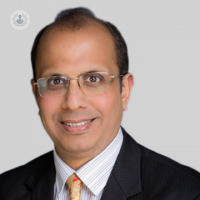Understanding the resection process in gastric sleeve surgery
Escrito por:Gastric sleeve surgery, also known as sleeve gastrectomy, has become a popular and effective weight loss solution for individuals struggling with obesity. This surgical procedure involves the removal of a significant portion of the stomach, resulting in a sleeve-shaped stomach that is approximately the size and shape of a banana. While the overall procedure encompasses several critical steps, Mr Sanjay Agrawal will delve into the specifics of the resection process, highlighting its importance and impact on the surgery’s success.

The resection process: Key component of gastric sleeve surgery
The resection process is the core element of gastric sleeve surgery. It involves the removal of approximately 75-80% of the stomach, leaving behind a slender, tube-like structure. This step is crucial as it directly influences the patient's capacity for food intake and the regulation of hunger hormones.
Step-by-step overview
- Anaesthesia administration: The procedure begins with the administration of general anaesthesia to ensure the patient is unconscious and free of pain during the surgery.
- Port placement and trocar insertion: The surgeon makes several small incisions in the abdomen to insert trocars, which are hollow tubes that serve as access points for surgical instruments. This is done laparoscopically, meaning it is minimally invasive.
- Stomach mobilisation: The surgeon carefully dissects the surrounding tissues to mobilise the stomach, creating a clear view and access for the resection.
- Size calibration: A bougie, which is a thin, flexible tube, is inserted into the stomach. This serves as a guide to ensure the new stomach sleeve is of the correct size, typically around 60-100 millilitres in volume.
- Stapling and cutting: Using a surgical stapler, the surgeon staples along the length of the stomach, starting from the pylorus (the stomach’s lower end) and moving upwards towards the oesophagus. As the stapler simultaneously cuts and seals the tissue, the excess portion of the stomach is removed. This stapling technique is critical as it reduces the risk of leaks and ensures a secure closure.
- Leak test: To verify the integrity of the stapled line, the surgeon conducts a leak test. This often involves filling the stomach with a saline solution and observing for any leaks, which are corrected immediately if present.
- Incision closure: Finally, the small incisions are closed using sutures or surgical glue, and the patient is moved to the recovery area.
Impact of the resection process
The resection process is important for several reasons:
- Reduced stomach volume: By significantly reducing the stomach’s size, patients experience early satiety, leading to reduced caloric intake and subsequent weight loss.
- Hormonal changes: The removal of the stomach’s fundus, where most ghrelin (the hunger hormone) is produced, helps decrease hunger sensations and improve appetite control.
- Metabolic benefits: Beyond weight loss, patients often experience improvements in metabolic conditions such as type 2 diabetes, hypertension, and hyperlipidaemia due to the changes in gut hormones and reduced fat mass.
Benefits and considerations
Advantages
- Effective weight loss: Patients typically lose 60-70% of their excess weight within the first-year post-surgery.
- Minimally invasive: The laparoscopic approach results in smaller scars, less pain, and quicker recovery compared to open surgery.
- Improved quality of life: Many patients report significant improvements in physical health, mental well-being, and overall quality of life.
Considerations
- Nutritional deficiencies: Due to the reduced stomach size and changes in digestion, patients must adhere to dietary guidelines and take vitamin supplements to avoid deficiencies.
- Potential complications: While relatively safe, risks such as leakage, infection, or blood clots exist and require careful monitoring.
Mr Sanjay Agrawal is an esteemed surgeon. You can schedule an appointment with Mr Agrawal on his Top Doctors profile.


